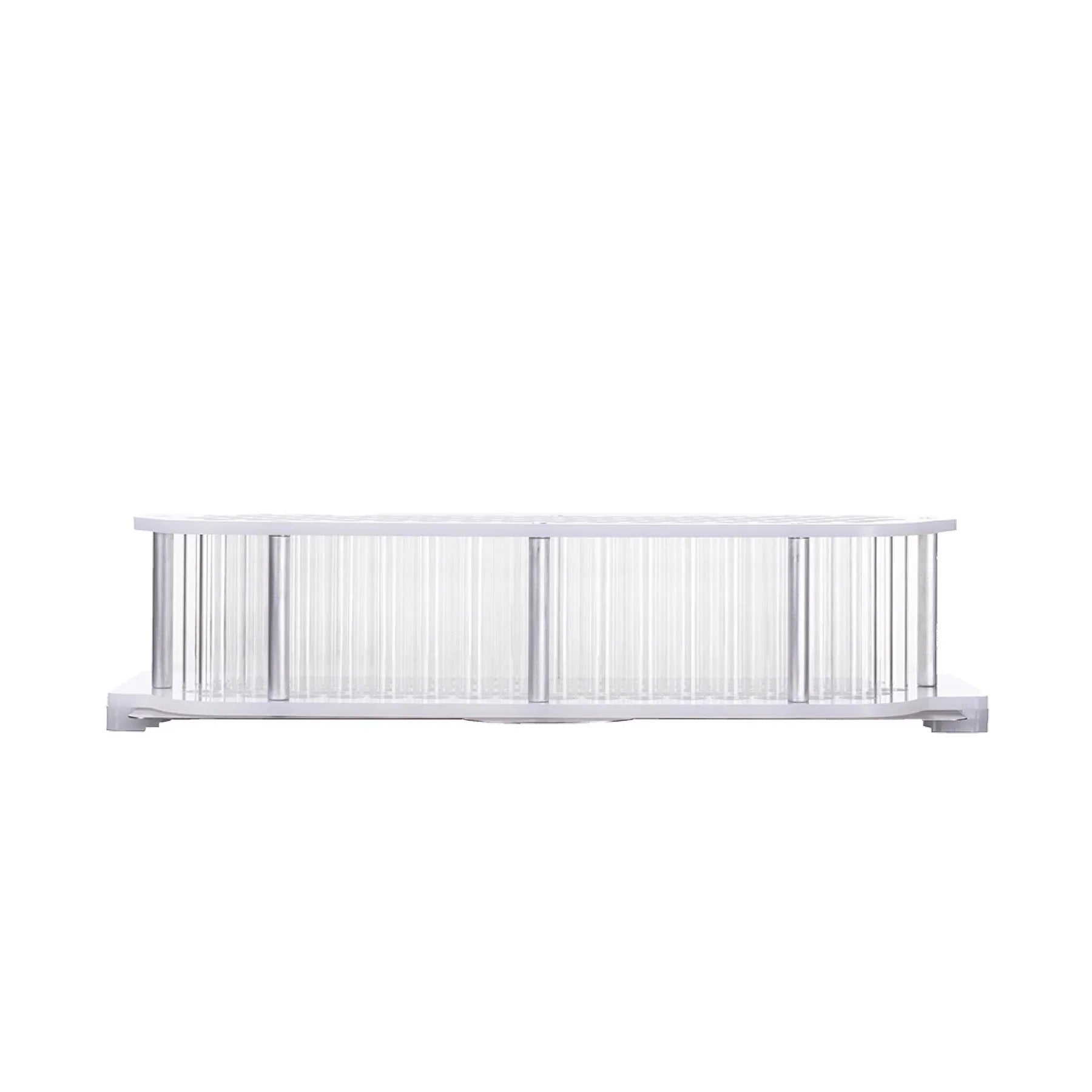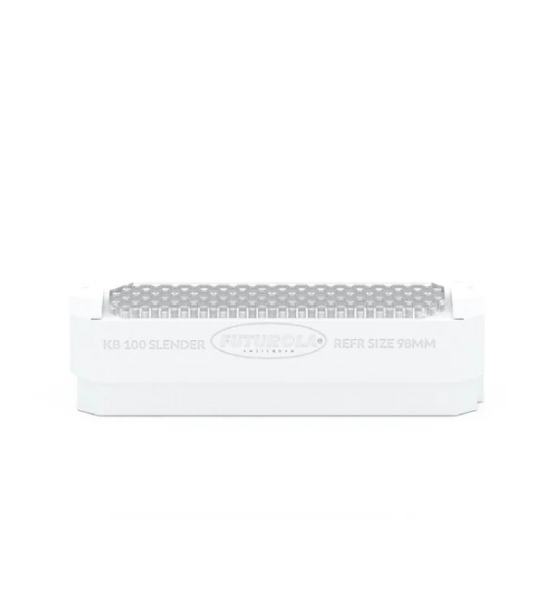A dutch crown device is designed to streamline the finishing process of cone production, creating a consistent and professional appearance across every pre-rolled cone. By applying a tight Dutch Crown fold, the device closes the tip of each cone securely and uniformly.
This not only enhances presentation but also improves functionality, ensuring cones remain intact during handling, packaging, and storage. For operations working with king-size cones or those managing high-volume production cycles, the addition of this device to the workflow is a significant upgrade.
Its integration with automated cone-filling systems means efficiency and precision can be maintained at scale. The result is a reliable system that delivers uniform products ready for packaging and distribution.
Why the Dutch Crown Device Matters in Cone Production
The importance of the dutch crown device lies in its ability to address challenges that arise in cone production. Manual closure methods are slow, inconsistent, and often wasteful. The device provides a uniform seal that improves product presentation and protects the contents of the cone during handling, storage, and transportation. For large-scale producers, this uniformity builds trust with distributors and customers, as every cone meets the same professional standard.
Another reason the device matters is its ability to save time and resources. This allows teams to redirect labor toward other critical stages such as packaging, labeling, or quality control. The resulting increase in efficiency translates into higher daily output without compromising quality.
Consistency also plays a role in product performance. Cones sealed with a Dutch Crown fold maintain structural integrity better than those closed manually. This reduces product loss, minimizes spillage, and ensures that every cone looks identical on the shelf. In industries where presentation directly influences perception of quality, this advantage is significant.
The device also reduces long-term costs by minimizing waste. Poorly sealed cones often lead to material loss, which cuts into profitability. A precise closure mechanism ensures that contents remain intact, protecting both the product and the bottom line. Over time, this efficiency has measurable financial benefits, particularly for high-volume operations.
Improving Output Quality
One of the most immediate advantages of the dutch crown device is its impact on output quality. Manually sealed cones often vary in appearance, resulting in an inconsistent product line. A uniform Dutch Crown fold eliminates this variability, creating cones that are identical in presentation. This uniformity appeals to both distributors and consumers, who value consistent quality in every batch.
The Dutch Crown fold also enhances durability. Cones with tightly sealed tops are less prone to accidental spillage or damage during handling. This protects the contents from being wasted and ensures that cones arrive at their destination intact. When customers receive cones that look and function as expected, their confidence in the product increases.
Over time, this improvement in output quality contributes to brand reputation. Producers that consistently deliver well-sealed cones position themselves as reliable and professional. The ability to maintain these standards even as production scales is a key reason why the dutch crown device is considered essential in modern workflows.
Enhancing Workflow Efficiency
Workflow efficiency is another critical advantage of the dutch crown device. Closing cones manually can be labor-intensive, slowing down production lines and creating delays. In high-volume operations, even small inefficiencies compound into significant losses of time and resources. The device eliminates delays and ensures a continuous workflow.
Integration with automated filling machines further enhances efficiency. For example, when paired with a Knockbox, the device allows cones to move directly from filling to sealing in one seamless process. This integration reduces downtime, increases productivity, and enables teams to meet higher production targets with fewer staff.
In addition to saving time, the device reduces strain on workers. Repetitive manual folding can be tiring and error-prone, especially when performed at scale. Automation minimizes human error while also reducing physical fatigue, contributing to a more sustainable and effective production process.
How the Dutch Crown Device Works
The dutch crown device is designed with simplicity and functionality in mind. It operates by applying a uniform fold to the tops of cones, creating the Dutch Crown closure. Once cones are loaded into the device, the mechanism folds each top identically, securing the material inside and delivering a polished finish. This process takes only seconds, compared to the manual method which is much slower and inconsistent.
Compatibility is another important feature. The device is typically used with king-size cones, although certain models are designed for slender formats. This adaptability ensures that producers can choose the appropriate version based on the cone sizes they use most frequently. As a result, the device integrates seamlessly into diverse production lines.
Integration with automated filling systems also defines how the device works. Cones that have been evenly filled move directly to the closure stage without interruption. This smooth transition maintains workflow momentum, reduces handling errors, and ensures cones remain uniform from start to finish. The entire process reflects a commitment to efficiency, scalability, and consistency.
Compatibility with Cone Sizes
Cone compatibility is a defining feature of the dutch crown device. While its primary function supports king-size cones, variations exist to accommodate slender styles. Producers benefit from this flexibility because it allows them to standardize their finishing process regardless of cone size. This adaptability makes the device useful across different product ranges.
The compatibility ensures that cones maintain proper alignment during the sealing process. Misaligned cones often result in uneven folds, wasted material, or damaged paper. Manufacturers minimize these risks and ensure consistent results. This is especially important in high-volume settings where small errors can multiply quickly.
Standardization also improves workflow predictability. When cones are consistently sealed, packaging and distribution proceed without interruptions. This reliability is particularly valuable in industries where deadlines and batch sizes must be met without compromise.
Integration with Automated Systems
The effectiveness of the dutch crown device is amplified when integrated with automated systems. Automated filling machines load cones with precision, and the closure device follows by sealing them instantly. This integration creates a streamlined production line that operates at maximum efficiency.
The collaboration between these devices reduces downtime between stages. Cones no longer require manual handling between filling and sealing, which reduces the likelihood of spillage or damage. Instead, the process flows smoothly, maintaining the rhythm of large-scale production.
This integration also simplifies staff responsibilities. One operator can manage multiple stages of production without the need for additional labor. As a result, the entire workflow becomes more sustainable, cost-effective, and scalable.
Step-by-Step Sealing Process
The sealing process begins once cones are loaded into the device. Each cone is positioned upright, ensuring that the tops are aligned correctly for folding. The device then applies pressure to create the Dutch Crown fold, sealing the cone securely without damaging its structure. This process is repeated across every cone, producing a tray of uniformly finished products in seconds.
The simplicity of the process is part of its appeal. Operators do not require extensive training, as the mechanism is designed for ease of use. This accessibility makes the device a practical choice for both small and large operations.
The results are immediate: cones emerge from the device with identical tops, ready for packaging or further processing. This consistency is what sets the Dutch Crown fold apart from manual twisting and highlights the device’s importance in professional workflows.
Benefits of Using a Dutch Crown Device
The benefits of the dutch crown device extend beyond speed and efficiency. Its primary advantage is consistency, which is crucial for brand reputation and consumer trust. Cones that are sealed uniformly project professionalism and reliability, reinforcing the perception of quality. In industries where presentation directly influences sales, this benefit cannot be overstated.
Another benefit is cost savings. By reducing waste, minimizing labor needs, and improving workflow efficiency, the device contributes to higher profitability. Manual sealing methods often result in wasted material, uneven products, or increased staffing requirements. Automating the process addresses all of these issues simultaneously, making it a financially sound investment.
Finally, the device enhances scalability. As businesses grow, maintaining consistency becomes more challenging. Manual processes cannot keep up with higher production demands. The dutch crown device, however, scales seamlessly, allowing producers to expand without sacrificing quality or efficiency.
Consistency at Scale
Consistency is a hallmark of successful production. The dutch crown device ensures that every cone receives the same closure, regardless of batch size. This uniformity builds trust with distributors and consumers, who expect identical products across every order. Inconsistent closures undermine confidence and can harm long-term relationships.
Scaling production often introduces variability, but the device prevents this problem. Whether producing 50 cones or 5,000, the Dutch Crown fold delivers the same outcome. This predictability is critical for brands seeking to establish themselves as reliable suppliers.
The ability to maintain consistency also reduces quality control issues. Fewer errors mean fewer rejected batches, less waste, and smoother packaging processes. Over time, this consistency supports both operational stability and brand reputation.
Professional Presentation
Presentation plays a major role in product perception. Cones with uneven tops or sloppy closures project an unprofessional image. The dutch crown device elevates presentation by delivering a clean, uniform fold across every cone. This polished appearance sets products apart on shelves and reinforces the impression of quality.
Professional presentation also enhances packaging. Neatly sealed cones fit more efficiently into trays, boxes, or wrappers, reducing the risk of damage during shipping. This attention to detail benefits both producers and consumers, creating a product that looks as good as it performs.
Over time, the professional appearance contributes to stronger market positioning. Brands that consistently deliver well-presented cones establish themselves as leaders in quality, making the Dutch Crown fold an important competitive advantage.
Labor and Cost Savings
One of the most practical benefits of the dutch crown device is the reduction in labor and costs. Manual folding requires significant time and manpower, particularly in high-volume operations. Automation reduces reliance on staff for this repetitive task, allowing resources to be redirected toward more valuable areas of production.
Cost savings are also achieved through reduced waste. Poorly sealed cones often result in spillage or rejected batches, both of which increase expenses. A uniform closure mechanism ensures that material is protected, minimizing these losses and maximizing profitability.
In addition, the device’s durability and low maintenance requirements contribute to long-term savings. Once integrated into production lines, it continues to deliver value without frequent repairs or replacements. This reliability makes it a cost-effective solution for producers focused on efficiency.
Essential Tools That Complement the Dutch Crown Device
The dutch crown device works best when paired with other tools that optimize cone production. Preparation tools, filling machines, and finishing accessories all contribute to a seamless workflow. By combining these elements, producers can maximize efficiency, quality, and output.
Cones themselves play a foundational role in this process. Using Pre Rolled Cones of reliable quality ensures compatibility with both filling and closure devices. Accessories such as rolling papers, cone rollers, and rolling trays further support workflow efficiency. Each tool addresses a specific stage of production, and together they create a comprehensive system.
Preparation tools such as Shredders ensure that material is ground to the right consistency. A uniform grind makes filling easier, reduces waste, and supports consistent airflow in the final product. Combined with the Dutch Crown fold, these tools create a professional workflow from start to finish.
Practical Considerations Before Using a Dutch Crown Device
Adopting a dutch crown device requires thoughtful planning. Operators should receive training to ensure correct use, even though the device itself is straightforward. Proper setup is essential for maximizing performance and preventing errors during sealing. Familiarity with the process ensures that teams achieve efficiency from the outset.
Maintenance is another consideration. Regular cleaning prevents residue buildup, which can interfere with the folding mechanism. Preventive maintenance extends the life of the device and ensures consistent performance across production cycles. By keeping the device in good condition, producers avoid downtime and maintain steady output.
Scalability is also important. For smaller operations, the device adds professionalism and saves time. For larger producers, it scales seamlessly with output demands, ensuring consistency across thousands of cones. By considering these factors, producers can fully integrate the device into their workflows with confidence.
FAQs
What is the main purpose of a dutch crown device?
The main purpose of the device is to seal the tops of cones with a uniform Dutch Crown fold. This improves presentation, prevents spillage, and ensures consistent results across production batches.
Can the dutch crown device work with all cone sizes?
The device is typically designed for king-size cones, though specific models are available for slender or reefer formats. Compatibility depends on the design, so it is important to select the version that matches the preferred cone type.
How does the device improve production efficiency?
By automating the closure process, the device eliminates the need for manual folding. This saves time, reduces labor requirements, and allows production lines to scale without bottlenecks. It also reduces errors, further improving efficiency.
Is maintenance required for the dutch crown device?
Yes, maintenance is necessary to keep the device operating effectively. Regular cleaning removes residue that can interfere with the folding mechanism. Preventive care extends the life of the device and ensures consistent results.
How does it integrate with other cone production tools?
The device integrates seamlessly with filling machines, high-quality pre-rolled cones, and rolling accessories such as trays and rollers. Together, these tools create an optimized production system that supports both efficiency and quality.





LEAVE A COMMENT
All comments are moderated before being published.
This site is protected by hCaptcha and the hCaptcha Privacy Policy and Terms of Service apply.